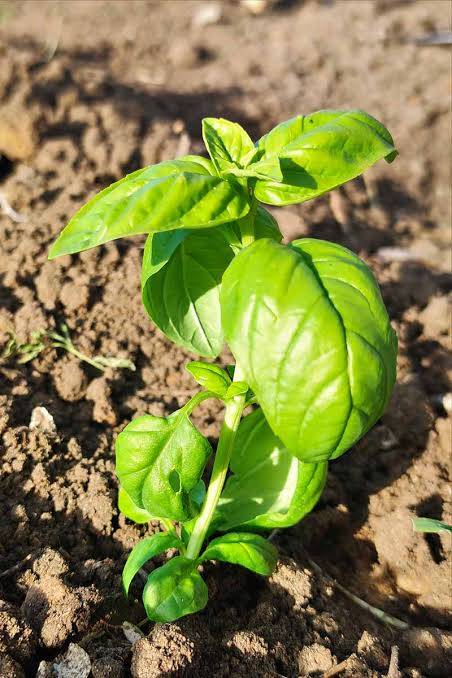Basil is one of the most beloved herbs in the culinary world. Known for its vibrant aroma and fresh, slightly sweet flavor, it’s a staple in Italian, Mediterranean, and Southeast Asian cooking. From pesto to pizza toppings and Thai curries, basil adds a burst of freshness that elevates any dish. But beyond the kitchen, growing basil at home is both simple and rewarding.This article will serve as a step-by-step guide on how to plant basil, exploring both classic gardening techniques and creative approaches. Whether you’re in the United States, the United Kingdom, or Canada, you’ll find strategies that suit your climate, space, and style.Why Grow Basil at Home?Before diving into planting methods, let’s look at why basil is worth the effort:Culinary versatility: Fresh basil enhances countless recipes.Health benefits: Rich in antioxidants, vitamins A and K, and anti-inflammatory properties.Garden helper: Basil repels harmful insects and attracts pollinators like bees.Accessible to all: Whether you have a large garden, a windowsill, or even a hydroponic kit, basil can be grown successfully.Classic Way: Growing Basil the Traditional WayStep 1: Choosing Basil VarietiesBasil comes in many types, and the variety you choose will depend on your taste and purpose.Sweet basil: The most common type, perfect for Italian dishes.Genovese basil: Ideal for authentic pesto.Thai basil: Spicy and aromatic, excellent for Asian cuisine.Purple basil: Adds color and a slightly spiced flavor.Step 2: Preparing the SoilClassic basil thrives in well-drained, nutrient-rich soil.Soil type: Loamy soil with good organic matter.pH balance: Basil prefers slightly acidic to neutral soil (6.0–7.0).Sunlight: At least 6–8 hours of direct sunlight per day.Pro tip: Mix in compost or aged manure before planting to give your basil a nutrient boost.Step 3: Planting Basil Seeds or SeedlingsSowing seeds: Plant basil seeds ¼ inch deep and 10–12 inches apart. Thin seedlings once they reach 2 inches tall.Using seedlings: Transplant store-bought or nursery seedlings after the last frost.Container gardening: Use pots with drainage holes; basil grows wonderfully indoors near a sunny window.Step 4: Watering and CareWatering: Keep soil moist but not waterlogged. Basil doesn’t tolerate “wet feet.”Mulching: A thin mulch layer helps retain moisture and prevents weeds.Fertilizing: Use a balanced fertilizer every 4–6 weeks.Step 5: Harvesting BasilStart harvesting leaves once the plant reaches 6–8 inches tall.Pinch leaves just above a leaf node to encourage bushier growth.Regular harvesting prevents flowering, which can make leaves bitter.Creative Ways: Thinking Outside the PotWhile the classic method works beautifully, basil can also be grown in more creative and modern ways.1. Indoor Herb GardensFor those in cooler climates like Canada or northern UK regions, indoor growing keeps basil available year-round. Use grow lights if sunlight is limited, and plant basil in small pots on a windowsill for easy access while cooking.2. HydroponicsHydroponic basil has gained popularity for its fast growth and clean, soil-free cultivation. With the right setup:Basil grows 25–30% faster.No weeding or pests from soil.Perfect for kitchens, apartments, or greenhouses.3. Companion PlantingPlanting basil alongside other crops is both creative and practical.With tomatoes: Basil enhances tomato flavor and repels pests.With peppers and oregano: Creates a Mediterranean garden bed.Avoid with rue and sage: These herbs compete poorly with basil.4. Decorative GardeningBasil doesn’t just taste good—it looks good. Purple basil, lemon basil, and cinnamon basil add color and fragrance to ornamental beds. Planting basil among flowers like marigolds or nasturtiums provides both beauty and pest control.5. Vertical GardeningIf space is limited, consider growing basil in vertical wall planters, hanging baskets, or stacked garden towers. This creative method maximizes space and keeps herbs within reach.Practical Tips for SuccessDon’t overwater: Basil hates soggy soil. Stick to a consistent, moderate watering routine.Pinch flowers early: Once basil flowers, leaves lose their best flavor.Protect from cold: Basil is extremely frost-sensitive. Bring pots indoors or use covers during chilly nights.Regular harvest: Harvest often to keep plants bushy and productive.Pest control: Watch for aphids and spider mites; use neem oil or insecticidal soap if necessary.Common Mistakes to AvoidPlanting too early: Basil won’t grow until soil temperatures reach at least 50°F (10°C).Overcrowding: Crowded basil plants get poor airflow, leading to fungal diseases.Neglecting pruning: Without pinching, basil becomes leggy and less flavorful.Forgetting to rotate pots: If growing indoors, rotate pots weekly so all sides get sunlight.Harvesting and Storing Basil CreativelyFresh use: Snip leaves as needed for cooking.Drying: Hang small bunches upside down in a dark, airy space.Freezing: Chop leaves and freeze them in olive oil using ice cube trays.Making pesto: One of the most delicious ways to preserve basil.Creative twist: Infuse basil into vinegar, oils, or even cocktails for gourmet flavors year-round.ConclusionWhether you stick to the tried-and-true methods or explore modern, inventive approaches, this classic or creative guide to how to plant basil shows that growing this herb is accessible for everyone. From preparing nutrient-rich soil and watering carefully to experimenting with hydroponics or decorative planting, basil adapts beautifully to many gardening styles.By planting basil, you not only enhance your cooking but also bring freshness, fragrance, and beauty into your home or garden. Whether you’re in the United States, United Kingdom, or Canada, basil rewards you with both practicality and creativity. Truly, how to plant basil works both ways—classic and creative!

